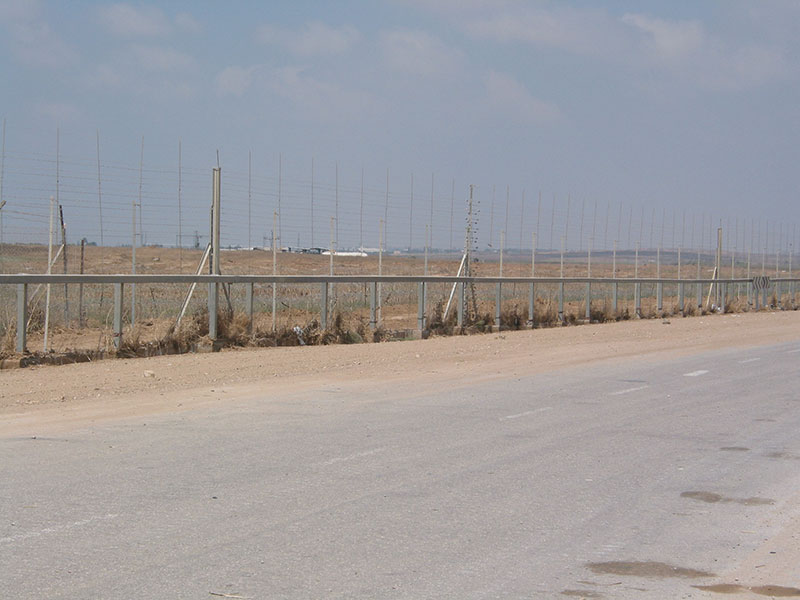Executive
A U.S. Hostage Rescue Operation in Gaza Should Not Be off the Table
A retired Army general joins a call at least to consider a U.S. operation to rescue American citizens how held hostage in Gaza.

On February 12 it was announced that Israeli Defense Forces executed a daring raid to rescue two of their citizens held hostage in Gaza. Considering recently released accounts of the brutality of life as a hostage, estimates that perhaps more than a fifth of them are no longer alive, and the fact that 8 Americans are still being held by Hamas, the United States should not rule out staging its own rescue operation to save Americans. Time is of the essence.
Though there are several factors to consider before launching such an operation, the rescue of American citizens should be a policy priority for the U.S. government—regardless of where they are in the world. The President, as the commander-in-chief, has constitutional authority to wield several levers of national power, including using the military to conduct a rescue operation.
Hostage rescue operations are by their very nature highly complex and risky undertakings. Such operations not only present risks to the hostages and innocent civilian bystanders, they also endanger the rescue force and potentially expose sensitive tactics, techniques, and procedures that may be necessary for use in future operations. Consequently, the commander-in-chief and his national security team must carefully consider and simultaneously manipulate all levers of national power before authorizing a rescue attempt. These include closely coordinating the diplomatic, informational, economic, financial, intelligence, legal, and military levers of national power.
Diplomatically, in the case of Gaza, the United States must delicately coordinate not only with Israeli government leaders, but also with the leadership of other countries whose citizens are being held captive. Of the remaining hostages, reports indicate that thirteen are Thai citizens, three are British citizens, two are Italian citizens, four are Romanian citizens, four are Portuguese citizens and two are Mexican citizens. Such coordination would need to be discreet and likely short on details to minimize the possibility of leaks. Moreover, diplomacy does not end after the rescue is over. It must continue throughout the post mission phases, especially if the operation does not go as planned.
Successful rescue operations have precedent in recent history. During Operation Jaque in 2008, in which three American defense contractors and twelve Colombian military, police, and political officials were rescued from terrorist captivity in Colombia, U.S. officials were reported to have coordinated with Colombian authorities ahead of time and reportedly provided a transport plane and medical personnel to aid in the rescue effort.
The mere prospect of a U.S. hostage rescue operation – as a matter of national policy – may itself benefit hostage negotiation efforts in that it affords our diplomats leverage in future U.S. and Qatari-mediated negotiations.
From an informational standpoint, a successful rescue mission would have considerable strategic value by sending a clear message to four distinct audiences: Firstly, the Hamas captors themselves, who would learn that kidnapping Americans does not pay – and other adversaries and would-be abductors across the world would take note as well. Second, our close friends and allies would be encouraged by the display of U.S. resolve. Third, to countries across the region and around the world who are hedging their alignment between the United States on one hand and the burgeoning Russian-Iranian-Chinese axis on the other. Especially those key countries who are undecided in the face of growing skepticism about U.S. commitments. And finally, the hostages themselves, if only to keep the faith and hang on, and to any American citizen traveling around the globe, to simply know that your country will come for you if you are taken captive.
Economically and financially, a hostage rescue mission must be complemented by strong U.S. actions to conclusively discourage future hostage-taking. This can be done not only by freezing the assets of Hamas’s backers in Tehran, but also by targeting Iran and its own benefactors in Beijing and Moscow by enforcing already-on-the-books such as U.S. sanctions against Iranian oil shipments to China. To complement these financial ‘sticks,’ the U.S. can apply ‘carrots’ using economic levers to coax countries with leverage over Hamas into applying stronger pressure to release the remaining captives.
Another indispensable lever of U.S. national power that would need to be brought to bear for a successful hostage rescue mission is that of intelligence. All hostage rescue missions require comprehensive, precise, and timely intelligence to sufficiently reduce the risk to successful mission execution. This intelligence comes in many forms, including human intelligence (HUMINT), signals intelligence (SIGINT), imagery intelligence (IMINT), measurement and signature intelligence (MASINT), and more. Without exquisite tactical intelligence and impeccable operational security, decisionmakers cannot make informed judgments on a go or no-go call. Fortunately, the United States has by far the most robust and comprehensive intelligence collection capability in the world. Couple that with the intelligence of allies and partners like Israel, the United States will likely have a reasonably robust picture of the operational environment in Gaza.
To complement the hostage rescue mission, the United States could also bring legal instruments to bear to punish Hamas leaders for their participation in the October 7 attack and the kidnapping of hundreds of innocent people. This could include demanding that Hamas fugitives from U.S. justice, like Mousa Abu Marzook, who are living in other countries be extradited to the United States.
Finally, any successful U.S. hostages rescue mission in Gaza would, of course, require the involvement of the U.S. military. Not only does the United States have the finest military in the world, but it also has among the best-trained and most technically advanced hostage rescue force anywhere in the world.
U.S. hostage rescues have a track record of success, including not only the Operation Jaque, but also the U.S. rescue mission that freed an American taken hostage in a boat off the coast of Somalia in 2009 and a subsequent rescue mission which freed two Americans from Somali pirate captivity in 2012.
These highly publicized missions are likely not the only successful U.S. hostage rescue missions in recent history, as other successful rescue efforts may have taken place but kept in secrecy to protect intelligence sources and methods, as well as military tactics, techniques, and procedures.
In the final analysis, the President has the authority and obligation to rescues American captives whose lives are in peril. He has the tools of U.S. national power at his disposal to reduce the risk associated with launching a rescue operation. If the Israeli government acquiesced, and if risks to the hostages and rescue force were sufficiently mitigated to an acceptable, the U.S. commander-in-chief should absolutely authorize a rescue attempt.
The views expressed in this article are those of the authors and do not reflect the official policy or position of the Department of Defense or the U.S. Government.
This article was originally published by RealClearDefense and made available via RealClearWire.
-

 Executive4 days ago
Executive4 days agoSecret Service chief gets no solace
-

 Executive3 days ago
Executive3 days agoWaste of the Day: Louisville Taxpayers Pay Nearly $600,000 For Empty Building’s Maintenance, Security
-

 Guest Columns4 days ago
Guest Columns4 days agoFear Itself: Democrats’ Favorite Strategy Caused Their Current Chaos
-

 Executive3 days ago
Executive3 days agoWhere is Joe Biden – or Jill?
-

 Executive1 day ago
Executive1 day agoWaste of the Day: Throwback Thursday: Cities Used Crime Prevention Funds on Soccer Games, Paper Shredding
-

 Executive2 days ago
Executive2 days agoFacile and politically motivated suggestions
-

 Civilization4 days ago
Civilization4 days agoBuild Iron Dome in the United States To Prepare for Israel’s Worst Day
-

 Executive4 days ago
Executive4 days agoThe Emerging GOP Plan To Beat Kamala Harris











